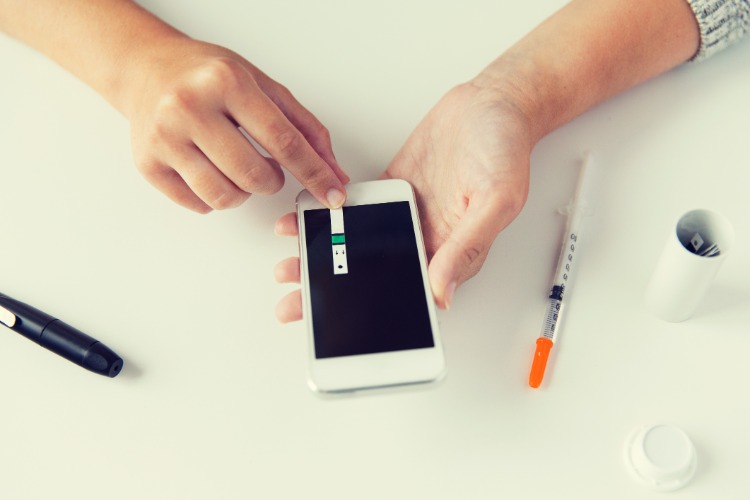Recognizing diabetes: study with smartphones and digital biomarkers
Researchers from San Francisco have developed a digital biomarker that can use the built-in camera of a smartphone to detect type 2 diabetes. This is one of the leading causes of illness and death worldwide. This method may be an inexpensive alternative for clinical testing.
Can a cell phone detect diabetes?

Type 2 diabetes affects more than 450 million people worldwide and can increase the risk of diseases that affect almost every organ system. This includes coronary artery disease, kidney failure, blindness, and stroke. In the current COVID-19 pandemic, scientists have also found that it increases the risk of severe symptoms. However, half of people with diabetes are unaware of their diagnosis and their health risks. The ability to detect a condition like diabetes with a painless, smartphone-based test opens up so many possibilities. So such an instrument can help identify people at higher risk and ultimately lower the prevalence of undiagnosed diabetes. Screening tools that researchers are using using the technology already in smartphones could quickly improve the ability to detect diabetes. This also includes populations that are beyond the reach of traditional medical care.

While diabetes mellitus is the seventh highest cause of death worldwide according to the World Health Organization, it significantly increases the risk of heart disease worldwide. The Centers for Disease Control and Prevention estimate that people with type 2 diabetes are twice as likely to die of heart disease as people without diabetes. In addition, diabetes can be asymptomatic for a long period of time, which makes diagnosis much more difficult. So far, there has been a lack of non-invasive and widely scalable tools for detecting diabetes. That motivated the researchers to develop this algorithm. When developing the biomarker, they hypothesized that a smartphone camera could be used to detect vascular damage due to diabetes. This enables signals to be measured, which researchers refer to as photoplethysmography (PPG). Most mobile devices, including smartwatches and fitness trackers, can collect such data.
Study results

The researchers used the phone’s flashlight and camera to measure PPG. This enabled them to detect color changes in the fingertip that corresponded to each heartbeat. Overall, the algorithm correctly identified the presence of diabetes in up to 81 percent of patients in two separate datasets. When the research team tested the algorithm on an additional data set from patients from personal clinics, it correctly identified 82 percent of patients with diabetes. Of the patients for whom the algorithm had not predicted diabetes, 92 to 97 percent actually had no disease in the validation. At this level of prediction, the study’s authors said the algorithm could play a role similar to other widely used disease screening tools. Thus, this can reach a much wider group of people followed by confirmation of the diagnosis by a doctor and treatment plan.
Recognizing the post diabetes: Study with smartphones and digital biomarkers appeared first on Deavita.com | Home ideas, design, hairstyles, make-up, lifestyle, health and beauty tips.
















